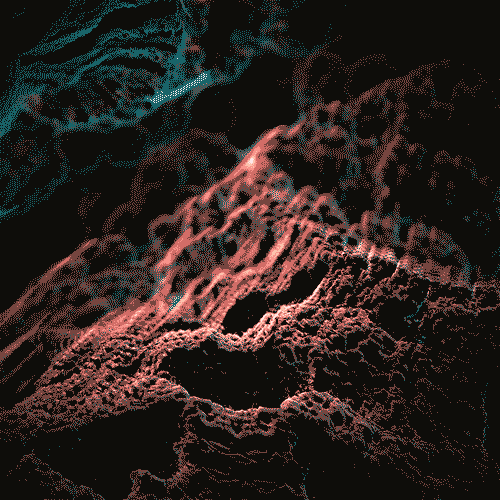Etsy



Etsy
More Posts from Tres-4b-blog and Others
How much is known about Neptune's atmosphere, more precisely about "raining diamonds"?
The atmosphere of Neptune is, in many ways, similar to that of Uranus. However, its dynamics are presented in a complex configuration of strong winds that sweep the planet, besides the formation of cyclonic storms and clouds, with clearly visible visual characteristics.

The upper atmosphere of Neptune is made up of 79% hydrogen, about 18% helium and most of the remaining methane, the presence of which imparts the blue-indigo color of the planet by absorbing the incident red radiation.

The diamond rain on Neptune and Uranus was predicted long ago, because of the pressure inside the planet that could be formed by carbon and hydrogen. But now it was virtually confirmed by an experiment conducted by an international team of scientists, this “diamond rain” was recreated under laboratory conditions for the first time, giving us the first glimpse into what things could be like inside ice giants.

At about 10,000 km below the surface of these planets, hydrocarbon compression is thought to create diamonds. To recreate these conditions, the international team submitted a polystyrene plastic sample to two shock waves using an intense optical laser in the Matter in Extreme Conditions (MEC) instrument, which were then paired with X-ray pulses from Linac Coherent Light Source SLAC (LCLS).

Polystyrene is made from a mixture of hydrogen and carbon, key components of the general chemical composition of the ice giants. In the experiment, the team was able to see that almost all of the carbon atoms in polystyrene were embedded in small diamond structures up to a few nanometers wide.
However, in Uranus and Neptune, scientists predict that diamonds would become much larger, perhaps millions of carats by weight.
2°image: (This false color photograph of Neptune was made from Voyager 2 images taken through three filters: blue, green, and a filter that passes light at a wavelength that is absorbed by methane gas. Thus, regions that appear white or bright red are those that reflect sunlight before it passes through a large quantity of methane). 1°image, 3°image & 4°image.
Here are two links if you want to read about it: Click here and here.
>“you’re not allowed to use x function in your program because that’s too easy, come up with the implementation yourself” me: *realises implementation is open source so just looks at source code for x function and copies and changes it*

-
 wolfofromania liked this · 4 years ago
wolfofromania liked this · 4 years ago -
 smokinlikemarley liked this · 4 years ago
smokinlikemarley liked this · 4 years ago -
 catladychronicles liked this · 4 years ago
catladychronicles liked this · 4 years ago -
 shewholovesvillains liked this · 4 years ago
shewholovesvillains liked this · 4 years ago -
 letsdodrugsbro liked this · 4 years ago
letsdodrugsbro liked this · 4 years ago -
 rinbowgemdoll reblogged this · 4 years ago
rinbowgemdoll reblogged this · 4 years ago -
 imdragonmyfeet reblogged this · 5 years ago
imdragonmyfeet reblogged this · 5 years ago -
 imdragonmyfeet liked this · 5 years ago
imdragonmyfeet liked this · 5 years ago -
 tres-4b-blog reblogged this · 6 years ago
tres-4b-blog reblogged this · 6 years ago -
 hisaodiagon liked this · 6 years ago
hisaodiagon liked this · 6 years ago -
 hisaodiagon reblogged this · 6 years ago
hisaodiagon reblogged this · 6 years ago -
 80smotley reblogged this · 6 years ago
80smotley reblogged this · 6 years ago -
 ohiloveyourhair liked this · 6 years ago
ohiloveyourhair liked this · 6 years ago -
 secret-real-hero liked this · 6 years ago
secret-real-hero liked this · 6 years ago -
 h20-mel0n reblogged this · 6 years ago
h20-mel0n reblogged this · 6 years ago -
 dangerouslycleverflower reblogged this · 6 years ago
dangerouslycleverflower reblogged this · 6 years ago -
 dangerouslycleverflower liked this · 6 years ago
dangerouslycleverflower liked this · 6 years ago -
 femininechrist reblogged this · 6 years ago
femininechrist reblogged this · 6 years ago -
 chiefingcheeba liked this · 6 years ago
chiefingcheeba liked this · 6 years ago -
 oanwej4-blog liked this · 6 years ago
oanwej4-blog liked this · 6 years ago -
 mystic-moth reblogged this · 6 years ago
mystic-moth reblogged this · 6 years ago -
 mystic-moth liked this · 6 years ago
mystic-moth liked this · 6 years ago -
 oldoakwoods reblogged this · 6 years ago
oldoakwoods reblogged this · 6 years ago -
 ghostintheshark liked this · 6 years ago
ghostintheshark liked this · 6 years ago -
 magmaslair liked this · 6 years ago
magmaslair liked this · 6 years ago -
 severedsmile liked this · 6 years ago
severedsmile liked this · 6 years ago -
 wergami reblogged this · 6 years ago
wergami reblogged this · 6 years ago -
 starr-medicine liked this · 6 years ago
starr-medicine liked this · 6 years ago -
 antisocialpeprally liked this · 6 years ago
antisocialpeprally liked this · 6 years ago -
 pocket-crystals reblogged this · 6 years ago
pocket-crystals reblogged this · 6 years ago -
 witchythingsandstuffs liked this · 6 years ago
witchythingsandstuffs liked this · 6 years ago -
 pail-o-snail-blog reblogged this · 6 years ago
pail-o-snail-blog reblogged this · 6 years ago -
 pail-o-snail-blog liked this · 6 years ago
pail-o-snail-blog liked this · 6 years ago






